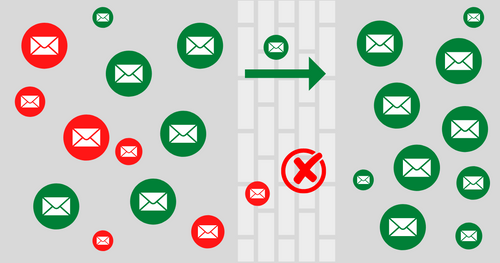mail marketing continues to be an effective strategy for businesses to engage with their audience and drive conversions. However, maintaining a clean and validated email list is crucial for successful campaigns. In this article, we will discuss some common email list validation mistakes to avoid, ensuring that your email marketing efforts yield optimal results.
Introduction
Building an email list is an essential part of any marketing campaign, but it's equally important to ensure the quality of the addresses on that list. By avoiding common email list validation mistakes, you can improve deliverability, reduce bounce rates, and enhance the overall effectiveness of your email marketing endeavors.
Mistake 1: Neglecting Double Opt-In Verification
When it comes to email list validation, one of the most critical mistakes to avoid is neglecting double opt-in verification. Double opt-in is a two-step process where subscribers confirm their email addresses by clicking on a verification link sent to them after subscribing. This method ensures that only legitimate and engaged users are added to your list.
Double opt-in verification provides several benefits. Firstly, it helps you maintain a clean and active email list by eliminating fake or mistyped email addresses. Additionally, it reduces the risk of spam complaints and improves deliverability rates.
Mistake 2: Failing to Regularly Cleanse Your Email List
Regularly cleansing your email list is vital for maintaining list hygiene and improving email deliverability. Over time, email addresses can become invalid or inactive, resulting in higher bounce rates and lower engagement. Failing to cleanse your list can lead to negative consequences, including damage to your sender reputation.
To avoid this mistake, implement a regular cleansing process. Identify and remove invalid, duplicate, and inactive email addresses. There are several email validation tools available that can automate this process, making it more efficient and accurate.
Mistake 3: Not Paying Attention to Syntax Errors
Another common email list validation mistake is not paying attention to syntax errors in email addresses. Syntax errors occur when an email address is formatted incorrectly, such as missing a character or including invalid characters. These errors can cause delivery failures and harm your sender reputation.
To mitigate this mistake, use an email validation tool that checks for syntax errors. These tools can quickly identify and flag email addresses with incorrect formatting, allowing you to correct or remove them from your list.
Mistake 4: Disregarding Role-based Email Addresses
Role-based email addresses, such as [email protected] or [email protected], are designed to reach specific departments or functions within an organization. While they can be useful for certain purposes, using them in your email marketing campaigns can be problematic.
Disregarding role-based email addresses can result in lower engagement and higher bounce rates. It's best to avoid sending marketing emails to role-based addresses, as they often have lower open and click-through rates. Focus on acquiring and nurturing individual email addresses to achieve better results.

Mistake 5: Underestimating the Importance of List Segmentation
Segmentation is a powerful strategy that allows you to divide your email list into smaller, more targeted groups based on specific criteria. By underestimating the importance of list segmentation, you miss out on the opportunity to personalize your emails and deliver relevant content to each segment.
Segmenting your email list based on factors like demographics, purchase history, or engagement level enables you to tailor your messaging, improving engagement and conversion rates. Take advantage of this email marketing tactic and avoid the mistake of sending generic emails to your entire list.
Mistake 6: Ignoring Unsubscribes and Complaints
Ignoring unsubscribes and complaints is a grave email list validation mistake that can harm your sender reputation and deliverability. When recipients express their disinterest or report your emails as spam, it's crucial to respect their preferences and promptly remove them from your list.
Provide a clear and easy-to-use unsubscribe option in your emails, allowing subscribers to opt out if they no longer wish to receive your messages. Additionally, monitor and address any spam complaints to maintain a positive sender reputation and avoid deliverability issues.
FAQ
What are some other common email list validation mistakes to avoid?
In addition to the mentioned mistakes, some others include purchasing email lists, neglecting email engagement metrics, failing to update contact information regularly, and not using a reputable email service provider.
How can I validate my email list effectively?
To validate your email list effectively, utilize email validation tools or services that check for syntax errors, bounce rates, and spam traps. These tools can help you maintain a clean and engaged email list.
What are the consequences of not validating my email list?
Not validating your email list can result in higher bounce rates, reduced deliverability, damage to your sender reputation, increased spam complaints, and lower engagement and conversion rates.
How often should I cleanse my email list?
It is recommended to cleanse your email list at least once every three to six months, depending on your email marketing frequency and list size.
Can I re-engage inactive subscribers on my email list?
Yes, you can re-engage inactive subscribers by sending targeted re-engagement campaigns, offering exclusive content or incentives, or requesting feedback to reignite their interest.
What is the best practice for managing unsubscribes and complaints?
The best practice is to promptly honor unsubscribe requests and complaints. Make it easy for subscribers to unsubscribe, and regularly monitor and address any spam complaints to maintain a positive sender reputation.
Conclusion
Avoiding common email list validation mistakes is essential for maintaining a healthy email list and maximizing the impact of your email marketing campaigns. By implementing best practices such as double opt-in verification, regular list cleansing, and segmentation, you can improve deliverability, engagement, and conversion rates. Stay vigilant and proactive in managing your email list to ensure long-term success in your email marketing efforts.



